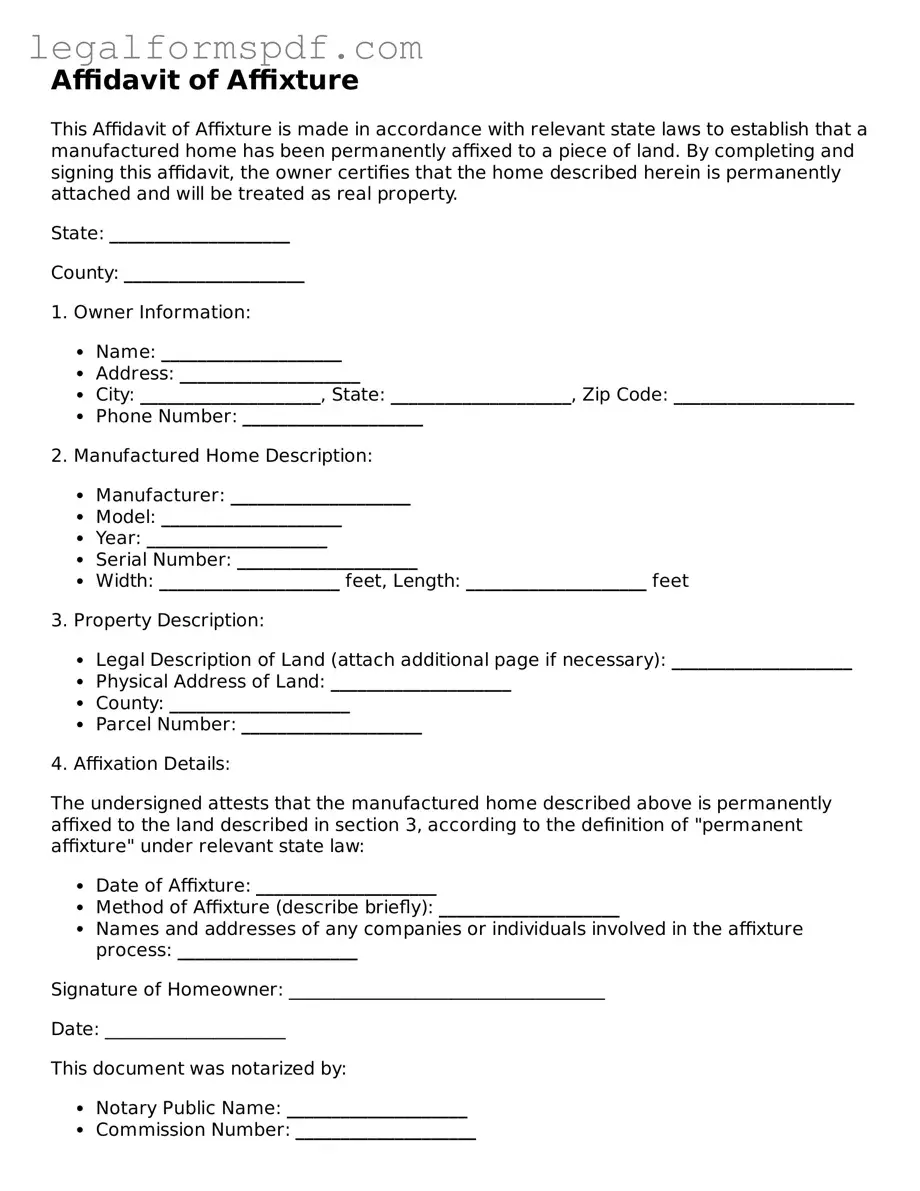The Affidavit of Affixture is used to declare that a mobile or manufactured home is permanently attached to land. This process turns the home into real property rather than personal property. A similar document is the Warranty Deed, which is used to transfer ownership of real property with a guarantee from the seller to the buyer that the title is clear. Both documents formalize changes in property status, but while an Affidavit of Affixture changes the nature of the property (from personal to real), a Warranty Deed changes the property's ownership.
Another document akin to the Affidavit of Affixture is the Deed of Trust, which involves three parties: the borrower, lender, and trustee. This document places real property as collateral for a loan, where the trustee holds the property title until the loan is paid in full. The Affidavit of Affixture also deals with property but focuses on altering its classification and does not directly involve financing arrangements. However, it may affect financing by changing the property’s eligibility for certain types of loans.
The Mechanic’s Lien is a document filed by a contractor, subcontractor, or supplier to secure a debt for work performed or materials supplied in improving a property. Similar to an Affidavit of Affixture, it affects property rights. The Affidavit alters the property’s legal status to real property, potentially increasing its value and changing its financing conditions, while a Mechanic’s Lien places a claim against the property title until the owed amount is settled.
A Declaration of Homestead is another document that, like the Affidavit of Affixture, is used to protect a homeowner’s interest in their property. By filing a Declaration of Homestead, homeowners may protect a portion of their home’s value from creditors, except under certain circumstances like voluntary secured debts. Both documents serve to establish more secure rights in one's living situation, though they operate under different legal principles and for different protections.
The Quitclaim Deed is used to transfer any ownership interest the signer (grantor) may have in a property, without guaranteeing that the title is clear of claims or liens. It closely relates to the Affidavit of Affixture by dealing with property rights, but the Quitclaim Deed does not affect the property’s classification. Instead, it changes the owner of the property’s interest without assurances, which contrasts with the affirmation of the property’s status provided by an Affidavit of Affixture.
Finally, the Title Affidavit is a document that plays a supportive role in affirming the accuracy of a property title during property transactions. It requires the signatory to attest to the truth of the information regarding the property title. Similar to the Affidavit of Affixture, it deals with property and legal affirmations, ensuring clear representation of the property’s status. While the Title Affidavit focuses on verifying the title's accuracy, the Affidavit of Affixture changes the nature of the property in legal and financial terms.
